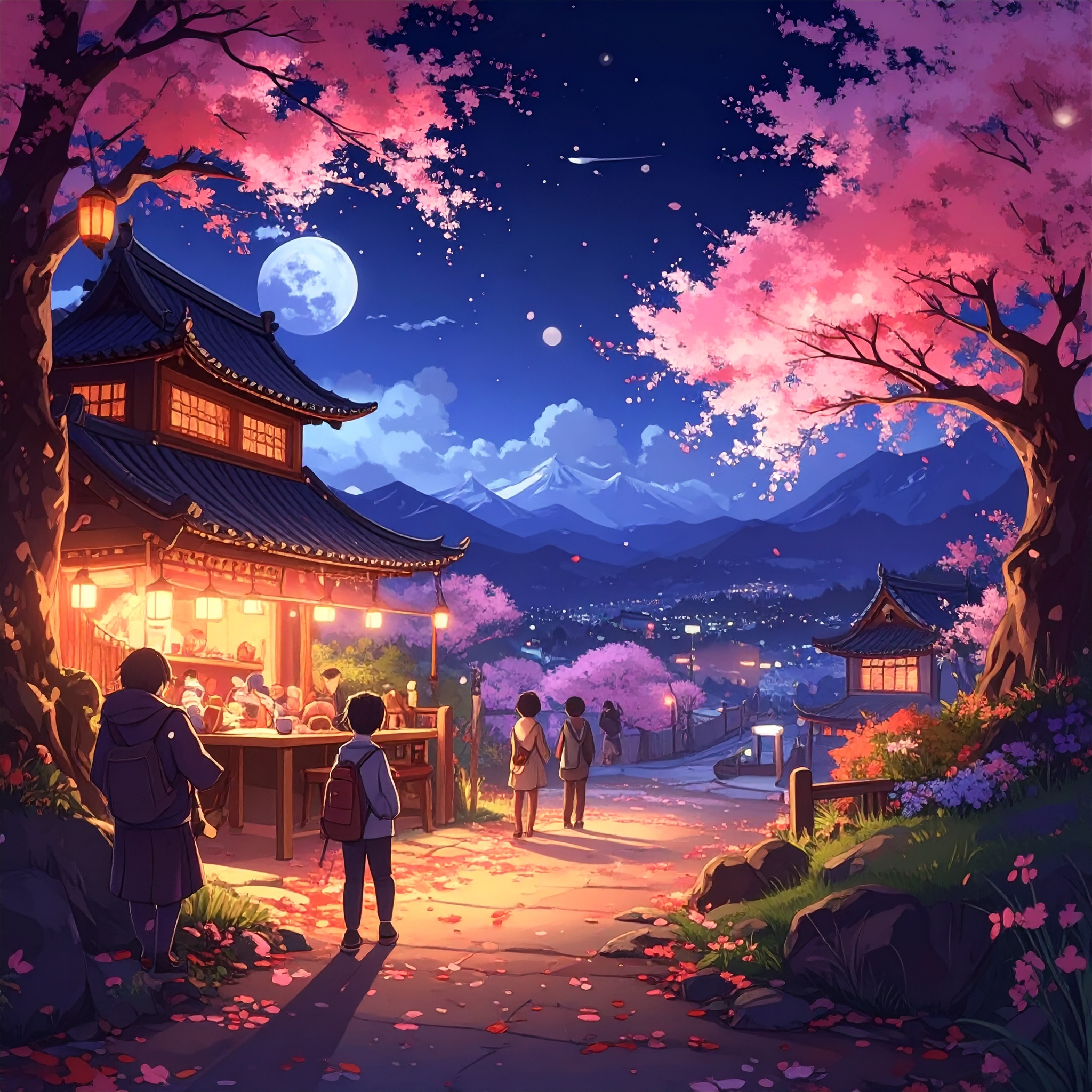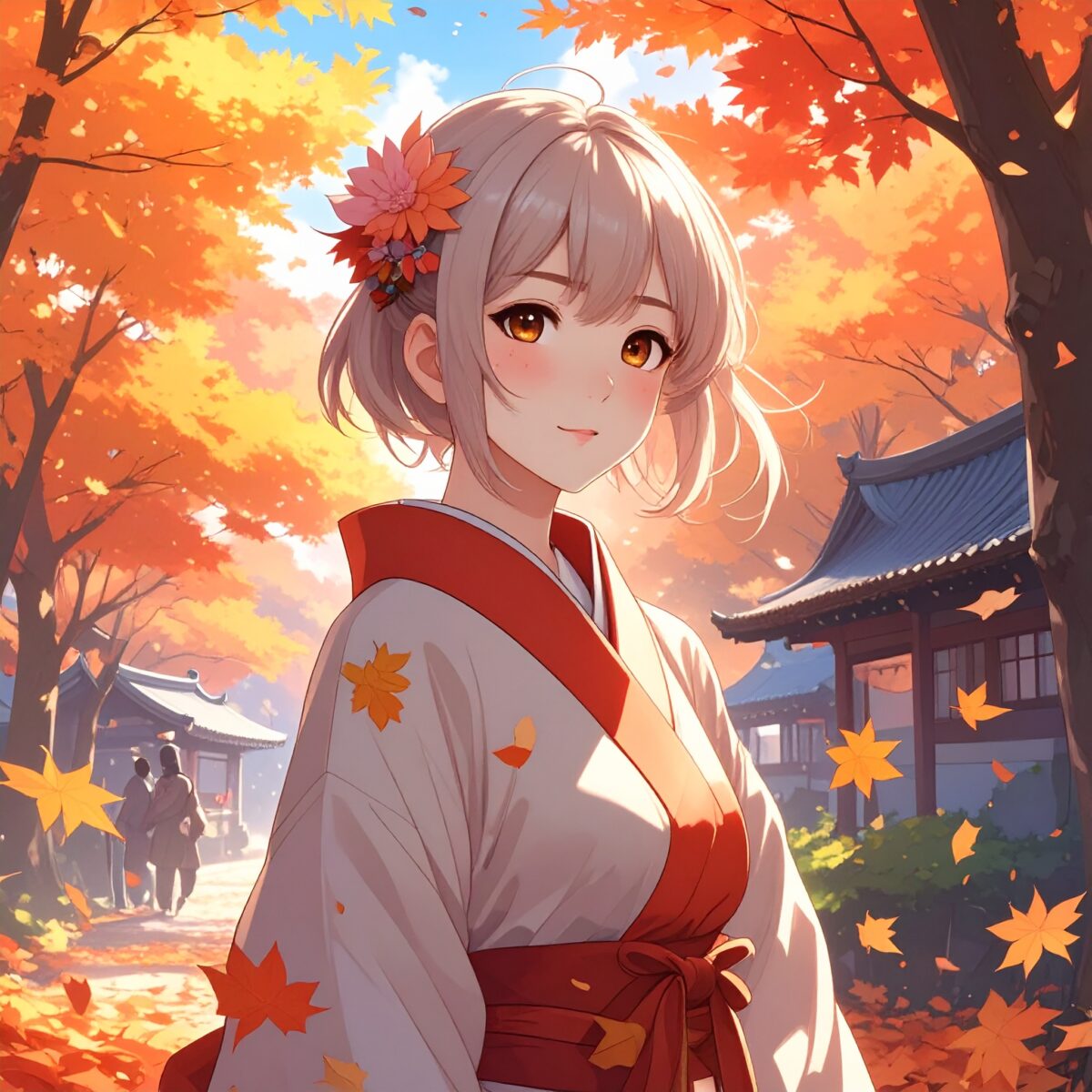Since ancient times, the Japanese have embraced the changing rhythms of nature, weaving its beauty into the fabric of everyday life and culture. Among the most cherished expressions of this sensibility are hanami (flower viewing) and momijigari (autumn leaf viewing)—customs that go far beyond simple leisure or sightseeing. These traditions reflect a uniquely Japanese way of communing with nature, celebrating not just its beauty but the fleeting emotions it stirs.
In spring, hanami unfolds as cherry blossoms bloom across the nation, signaling a shared awakening. News outlets report blooming forecasts, and people carve out time from work and school to gather in parks beneath the blossoms. Families and friends enjoy meals together under the flowering trees—a scene that has come to symbolize spring in Japan. Yet at its heart, hanami is not about the picnic, but about appreciating the ephemeral nature of the blossoms. Their brief, fragile life—often just a week—evokes a quiet reflection on impermanence, reminding people of life’s delicate beauty.
In autumn, momijigari offers a similarly poetic experience. As mountains and gardens turn brilliant shades of red and gold, people travel to seek out the season’s peak colors. It is a moment not only to witness the changing leaves, but to listen to the crunch beneath one’s feet, to breathe in the crisp air, and to feel the layered hues of nature echo within. This ritual of seasonal appreciation becomes a form of introspection—a way to align oneself with the natural cycle of aging, change, and quiet grace. Together, hanami and momijigari embody Japan’s aesthetic of transience, capturing the soul of a culture where nature is not merely observed, but felt—deeply, personally, and with reverence.

What unites these seasonal traditions is that they are not simply about “seeing.” In Japan, the appreciation of seasons extends into every aspect of life: poetry composed in praise of cherry blossoms, folding screens and ukiyo-e prints featuring autumn leaves, seasonal wagashi confections crafted for the occasion, meals designed around fleeting ingredients, and even attire that shifts with the natural palette. The Japanese aesthetic seeks to engage not only the eyes, but also the senses of taste, touch, language, and gesture—embodying a cultural sensitivity that lives quietly within the everyday.
Above all, what draws people to hanami and momijigari year after year is a shared reverence for the once-only nature of each season. Yes, the cherry blossoms and autumn leaves will return next year—but never in quite the same way. The scene you witness this year, in this light, with these people, in this moment, will never be repeated. The Japanese spirit embraces this fleetingness—not as loss, but as beauty. It is the cherished essence of the now that gives these seasonal rituals their enduring meaning.
In this way, hanami and momijigari are not simply events or sightseeing activities. They are subtle, emotional dialogues between people and the natural world. Through this quiet ritual of returning and remembering, the Japanese live with the seasons—feeling time not as something to control, but as something to accompany. To appreciate the seasons is to align the heart with the rhythm of change, to observe the impermanent with care, and to affirm the richness of being present.




